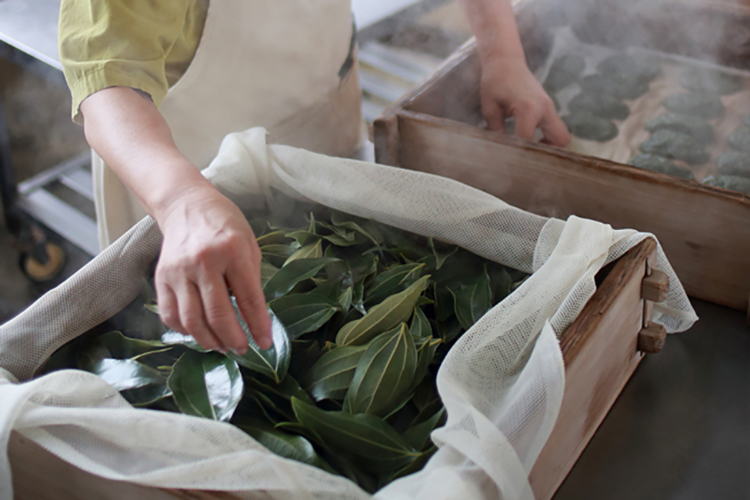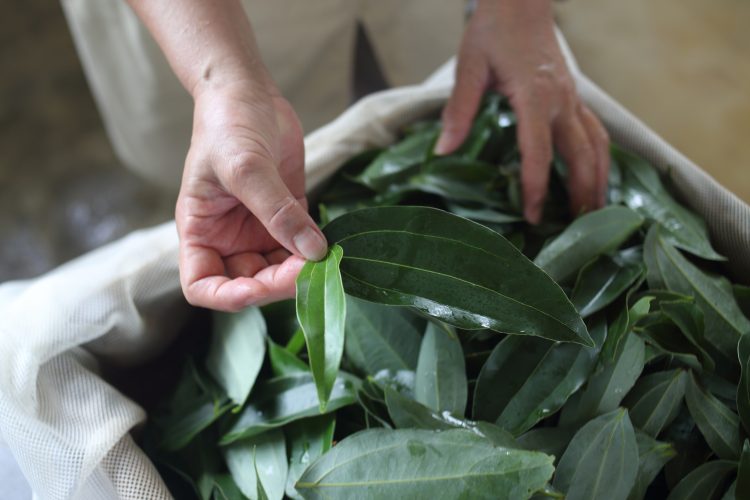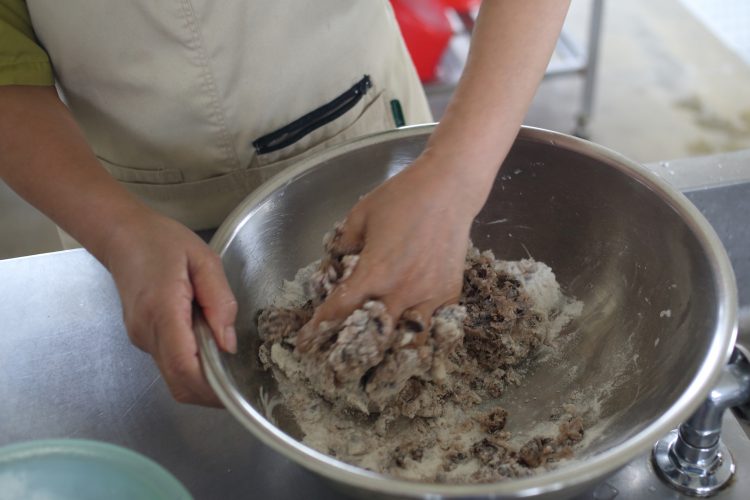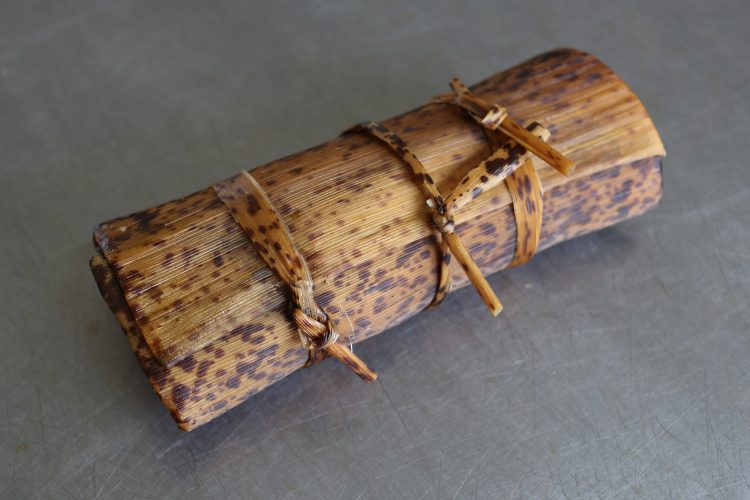Kesen Dango: Dumplings with a Fresh Twist
Dec 26,2019
Kesen Dango: Dumplings with a Fresh Twist
Dec 26,2019
In this irregular series, food culture researcher Kiyoshi Aya describes the local delicacies and ways of life she has encountered in different places throughout Japan.
Common Japanese sweets wrapped in leaves that come to mind include sasa dango [dumplings wrapped in bamboo leaves], kashiwa mochi [rice cake wrapped in an oak leaf], and sakura mochi [rice cake wrapped in a cherry leaf], among many others. Kiyoshi, in this article, relates the story of local sweets wrapped or sandwiched between leaves, including kesen dango dumplings that are widely known in Kagoshima.

“There is a wide variety of local sweets and rice cakes in Japan that use leaves. These foods are treasured not only because the leaves provide nice flavors but also because the leaves have a preservative effect. These sweets have been concocted to benefit from the leaves so the sweets can be eaten deliciously and safely for longer periods. Different variations of sweets and rice cakes exist in each locality because people used native plants that were close at hand. For example, some dumplings in western Japan use the leaves of the smilax japonica plant (also known as the china root). These dumplings are similar to kashiwa mochi and go by several different names, such as sankira dango or ibara manju, depending on the region. Another example is a sweet native to Okinawa called muchi, which is wrapped in shell ginger leaves.”
According to Kiyoshi, Kagoshima’s kesen dango is another of these sweets. Kesen dango dumplings are still a popular local sweet, either made at home or bought at Japanese confectionery stores.

“Kesen is a tree in the Cinnamomum genus and is used to produce spicy cinnamon. The tree grows natively in warm regions, and its leaves have a glossy sheen much like the camellia and their straight, elongated ribs are quite beautiful. The tree is very familiar in Kagoshima, and some people enjoy adding kesen roots to shochu [a distilled alcoholic beverage] because of their pleasant aroma.”
Many households plant a kesen as an ornamental tree in their yards or gardens. Because it is an evergreen, people can pick the tree’s leaves in any season and eat them year-round.

The dumplings are formed by kneading together glutinous rice, anko [sweet bean paste], and sugar. As for the type of anko, in addition to tsubu-an [anko with whole beans], some areas prefer koshi-an [strained anko].
“Glutinous rice and anko made of azuki beans are kneaded together and then steamed to make the dumpling dough, which is then wrapped between two lightly steamed kesen leaves. Before steaming the leaves have a very faint aroma. The steaming brings out an aroma lighter and fresher than cinnamon with a citrusy scent. That fragrance gets transferred to the dumplings.”

The dumplings are steamed for about 15 minutes, while the leaves are steamed for around three minutes and then kept warm. This technique results in colorful, aromatic kesen dango.

The piping-hot dumplings are quickly wrapped between kesen leaves.
Besides kesen dango made with glutinous rice and azuki tsubu-an, there are areas that use koshi-an or make yomogi dango [mugwort dumplings].
“These confectionaries have a slightly sweet taste, a chewy texture, and a fragrant aroma that wafts into the nose, making them a perfect match for Japanese tea. Kesen trees apparently grow natively in prefectures outside Kagoshima, but I think kesen dango can be considered a representative confectionary of Kagoshima.”

Another beloved Kagoshima sweet is akumaki.
“I visited a Kagoshima household once before, where they wrapped glutinous rice in bamboo bark and tied the bundles with string. They packed these bundles into an 18-liter drum, filled the drum with lye, and let it simmer over low heat for around two hours. The lye causes a chemical change that gives the glutinous rice a golden brown color and dissolves the rice grains, resulting in the akumaki’s characteristic soft, sticky, and chewy texture. The sweet is sprinkled with kinako [roasted soybean flour], sugar, or molasses before eating. The distinctive texture, which is different from the sponginess of mochi rice cakes, and the slight trace of bitterness make it an addictive taste. In Kagoshima, you can often find akumaki not only at Japanese confectionery shops but also at supermarkets, and they are much loved by the locals.”


Some localities wrap akumaki in bamboo grass leaves instead of bamboo leaves.
Saigo Takamori is said to have brought akumaki to the Seinan War as provisions for his soldiers. One advantage akumaki has is that, as a preserve, it can be carried and eaten for as long as a week.
“Making sweets from plants is time-consuming, starting with picking the leaves, and requires lots of careful planning. Despite this, the desire and wisdom of people long ago to eat delicious sweets over a long time are still present in the local confectionaries you can find in various regions. There are many unique local sweets informed by the local climate and conditions. Keep an eye out for them and taste them, either in your own town or during your travels.”

ood culture researcher and Secretary of the Research Division at the National Council for Washoku Culture
ood culture researcher and Secretary of the Research Division at the National Council for Washoku Culture
Born in Osaka prefecture, Kiyoshi is involved in researching traditional regional Japanese cuisine and the dietary habits in fishing and farming communities as well as writing and giving lectures about local foods.
Recent publications include Washoku Techo [Washoku Handbook] (co-author, published by Shibunkaku), Furusato no Tabemono [Hometown Food] (Washoku Culture Booklet No. 8) (co-author, published by Shibunkaku), and Shoku no Chizu [Maps of Food], Third Edition (published by Teikoku-Shoin).